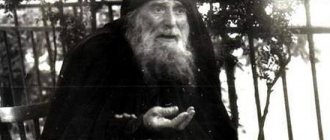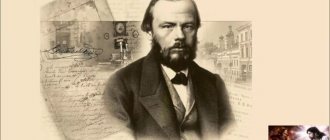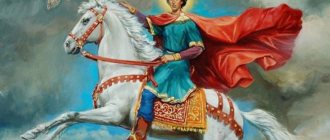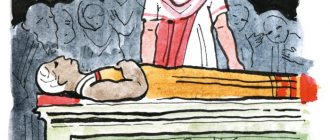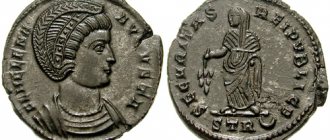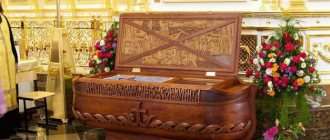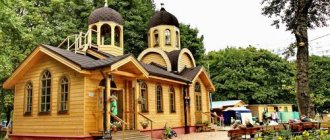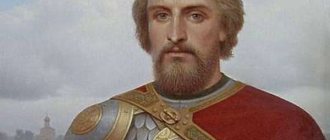The mysterious fate of Elder Fyodor Tomsky still haunts the minds of historians and ordinary people. According to legend, this man was actually Emperor Alexander I. Many people believe that the monarch, tired of state affairs, repented of the sins of the past, left the throne, faking his own death.
The emperor found refuge in a remote Siberian village, where he lived until the end of his days. It is not known for certain whether Fyodor Tomsky had any relation to the royal family. But the fact that he became famous for his godly life is a fact that does not require proof.
The mysterious death of Alexander the Pious
The Emperor died in 1825 from a short illness; his coffin remained closed during the funeral. His younger brother Nicholas took his place on the royal throne. There is no consensus among historians about the possible staging of the monarch's death. It is difficult to say with certainty whether Alexander I could give up state affairs to spend the rest of his life in solitude, or whether this is just a beautiful legend.
During the reign of Alexander I, many reforms were carried out aimed at improving the lives of ordinary people. Victory in the war with Napoleon raised the authority of the monarch in the eyes of ordinary people, for which he was nicknamed Alexander the Blessed.
Emperor Alexander I
Unlike his father, Alexander Pavlovich enjoyed the love and respect of his subjects, as evidenced by the folk songs composed in his honor. The monarch had a lot of time ahead to continue reforms and fight for the well-being of the people. Why, in this case, did he decide to leave the throne, if the legend about his hermithood is true?
According to eyewitnesses, Alexander I was burdened by participation in a conspiracy against his father, Paul I. It so happened that Alexander I took the throne after an involuntary parricide, although he only gave his consent to the removal of his distraught father from power. The sin of regicide did not let go of the monarch even after many years.
Recently, the emperor's character has undergone changes; he became humble and pious, devoted a lot of time to prayer, and could often be seen kneeling in front of the iconostasis. This gave rise to the idea that the emperor decided to leave the throne and become a beggar wanderer.
During the reign of Alexander III, the sarcophagus of the autocrat was opened and turned out to be empty. Thus, rumors about the suspicious death of the emperor were confirmed. An opinion arose that after the staged funeral, Alexander went to the desert to Seraphim of Sarov himself, and he accepted him as a student.
Interesting! The emperor took a new name for himself - Fedor and took the path of hermithood. They say that Nicholas I personally traveled to the Sarov Hermitage and met with Fyodor Kuzmich there.
Life path of Fyodor Kuzmich
Relatively detailed information about the life of the Russian elder dates back to the 30s of the 19th century. There are only distant hints about who he was before, what he did, what kind of life he led. The name of Fyodor Kuzmich was first mentioned in documents dating back to 1836. This year, an old man without any documents was detained at the Krasnoufimskaya crossing.
The man could not clearly explain the purpose of his trip. Marks from lashes were found on his back, but it was not possible to determine who this man was and where he was going. The strange traveler's cart was harnessed to a white horse, which would clearly be beyond the means of a simple beggar. The man gave his name as Fedor Kuzmich Kuzmin.
Blessed Elder Fyodor Kuzmich
The elderly man had a pleasant and majestic appearance, was well brought up, and behaved politely and courteously. His case was examined in court, and, despite the fact that the judges sympathized with the elder, he was sentenced to 20 lashes followed by exile to Siberia. This was the standard punishment for vagrancy in those days.
The elder did not object to the verdict and punishment, but, declaring himself illiterate, he instructed another person to sign in his place. It was clear to everyone present that the man not only knew how to write, but was also quite educated and well-read. It can be assumed that Fyodor Kuzmich was afraid that the document with a sample of his handwriting would be handed over to the authorities.
The elder aroused universal sympathy and love. He was the only one of all the prisoners who was not put in shackles before being sent to Siberia. Soldiers, officers and prisoners fell in love with Elder Fyodor as if they were their own father. At overnight stays, they gave him a separate place, they tried to start a conversation with him, and asked for his advice.
Important! Fyodor Kuzmich gained veneration among the people long before rumors about his noble origin spread.
The first few years of his exile, Fyodor Kuzmich lived in the small village of Zertsaly. Then one of the residents helped the elder build a secluded house in the village of Beloyarskaya, in which he could live and pray.
Local residents quickly fell in love with the hermit, tried to help him, invited him to the table, and treated him to the best dishes. The elder gratefully accepted food offerings in order to later distribute them to the poor. Fyodor Kuzmich did not take money from anyone. He himself lived his entire life observing strict fasting, but did not demand this from those who came to him for help.
Icon of the holy elder Theodore of Tomsk
Children from nearby villages came to the elder, and he taught them to read and write. Later, the elder himself began to walk around the settlements. He did not lecture anyone, did not impose his opinion about life and God, people themselves came to him for advice.
Fyodor Kuzmich talked with the peasants about faith and the Holy Scriptures, explaining in simple words what local priests did not explain to people. Residents of nearby villages saw him as a good friend and wise adviser.
Interesting to know! People who personally knew the elder rarely saw him praying, but after the death of Fyodor Kuzmich it was discovered that the man’s knees looked like complete calluses. It’s hard to even imagine how much time Fyodor Kuzmich spent in prayer, on his knees.
Fyodor Kuzmich did not look exhausted or exhausted. The tall, blue-eyed, stately elderly man looked like an epic hero who, with his current lifestyle, atoned for the sins of the past. He did not evoke pity at all, but his entire way of life evoked deep respect. His love for the Lord permeated his entire existence, so people around the elder felt easy and calm
Notes
- In Tomsk, work begins on the restoration of the “Imperial Quarter” and the estate of Fyodor Kuzmich
- A.A. Since 2009, Gycheva has been the church warden of the Orthodox parish of the Church of Blessed Xenia of Petersburg in the village of Aleksandrovskoye (Tomsk district).
- His Eminence Vladyko Rostislav (Devyatov) was elevated to the rank of Metropolitan of Tomsk and Asinovsky on March 4, 2013.
- Administration of the Tomsk region. Official "List of cultural heritage sites of regional significance." P. 150.
- Diocese: an examination of the remains of Tomsk Elder Fyodor may be carried out in the near future (05/25/2017).
Similarities between Primate Feodor and Tsar Alexander
The first to recognize Sovereign Alexander in the elder was a priest who had previously been sent into exile from St. Petersburg for some oversight. Father John claimed that he saw the emperor several times and simply could not help but recognize him. Because of rumors, the elder had to leave the village and go to another village.
Many wealthy peasants asked Fyodor to stay with them, but he found his shelter in the stable of the poor peasant Ivan Malykh. From the stable, he and the owner built a cell in which Fyodor Kuzmich lived for about 10 years.
Then, near the village of Krasnorechenskoye, one of the peasants erected a modest hut, into which Fyodor Kuzmich moved. Here the elder was visited by the bishop, who in those years was Athanasius of Irkutsk. According to eyewitnesses, the hermit and the priest communicated with each other in a foreign language, presumably French.
Similarities between Alexander I and Elder Theodore
Fyodor Kuzmich also communicated in the same language with other visitors of noble origin. According to the stories of the peasants, an officer and his wife came to see the old man, whose description suspiciously fits Nicholas I.
It is also surprising that Fyodor Kuzmich knew the history of the Russian state very well and told unique details about the War of 1812. After the news of the death of Nicholas I reached the village, the elder did not leave his home, where he tearfully and fervently prayed for the repose of the monarch’s soul.
Interesting to know! Many of those who knew Fedor personally guessed about his origin. He was often asked the question: isn’t his current lot a burden? Fedor always answered with a smile that right now he was free and calm. The elder said that he had nothing to lose, and the most precious thing - the Word of God and love for the Savior - would always remain with him. It was in this incarnation that he found freedom of spirit and true happiness.
The last days of Fyodor Tomsky
Shortly before his death, Fyodor Kuzmich settled in the house of gold miner Khromov. In the last years of his life, he was ill and suffered greatly, but tried not to burden anyone with his pain. Even on his deathbed, he did not reveal the names of his parents and the name of his Angel. At the moment of death, the elder’s fingers were folded as if he was about to make the sign of the cross.
The ashes of Fyodor Kuzmich were buried on the territory of the Alekseevsky Monastery in Tomsk. The authorities ordered the words “great” and “blessed” to be painted over on his grave, but after a while the inscription appeared from under the paint again.
Reverence
After the death of the righteous elder, his grave and cell became a place of pilgrimage for many people from different walks of life. Initially, regular and, over time, daily memorial services were held at the elder’s grave and in his cell. On the day of his repose, every year a particularly solemn funeral service was held in the monastery with a large crowd of people.
In 1873, Grand Duke Alexei Alexandrovich visited the grave and cell of Elder Theodore, and in 1891, the Tsarevich-Passion-Bearer Nikolai Alexandrovich unofficially visited the elder’s grave. Among other visitors are Minister of War A. N. Kuropatkin, Minister of Railways Prince M. I. Khilkov, Secretary of State A. N. Kulomzin, Commander-in-Chief of the Russian Army in the Far East, General N. P. Linevich. Member of the State Council M. N. Galkin-Vrassky, who deeply revered him, visited the grave of the righteous man more than once. He personally made efforts to decorate the burial place of the saint. The name of Galkin-Vrassky is also associated with the case of deliverance from imminent death through the intercession of St. Theodore - thanks to the desire to venerate the grave of the elder, Galkin-Vrassky refused to travel by steamer, which drowned along the way. Another case of the saint’s gracious help occurred with the largest researcher of the history of the reign of Alexander I, N.K. Schilder - he prayed to the elder for relief from headaches and, after seeing the saint in a dream, was healed. Finally, numerous healings of the sick took place in Tomsk, who visited the elder’s grave and turned to Saint Theodore with warm prayer.
At the beginning of the century, through the diligence of numerous Tomsk citizens, a chapel was erected over the elder’s grave. A circle of admirers of the elder was created at the monastery, which collected all the materials known about him and published them in print. At the diocesan council, the question was raised about the need for careful care for the preservation and acquisition into church property of things that were preserved from the elder.
In 1926, before the execution of the last monks of the Mother of God Alexievsky Monastery, prisoners here, Saint Theodore began to appear for some time in a floating translucent image. Clearly visible by numerous witnesses, at midnight he emerged through the wall of the chapel and slowly walked along the eastern wall of the monastery south to the monastic cemetery, where he disappeared. The saint seemed to warn the imprisoned monks about the need to prepare for death.
| Cancer with the relics of rights. Theodore of Tomsk |
Subsequently, the chapel over the saint's grave was destroyed, but the veneration of the saint was not stopped.
The long-awaited glorification of the saint took place in 1984, when, with the blessing of Patriarch Pimen, the name of the righteous Theodore of Tomsk was included in the Council of Siberian Saints. On July 5, 1995, his holy relics were found and placed in a wooden tomb in the temple of the Tomsk Mother of God-Alexievsky Monastery. The chapel over the saint's grave was restored, the weekly service of an akathist to the righteous Theodore was introduced into use at the Tomsk monastery, and the righteous man himself began to be revered as the heavenly patron of the city of Tomsk. Testimonies of grace-filled help through the prayers of the saint continued to arrive at the end and beginning of the 21st centuries. Troparion, tone 4
The righteous Theodore departed from the life of the world,/ you deigned to come freely to the land of Siberia,/ you surprised the people of Tomsk with miracles and signs of God,/ and after your death you strengthened the faith of those who honor you./ Remember us, who honor your memory,/ our Father Theodore
!
